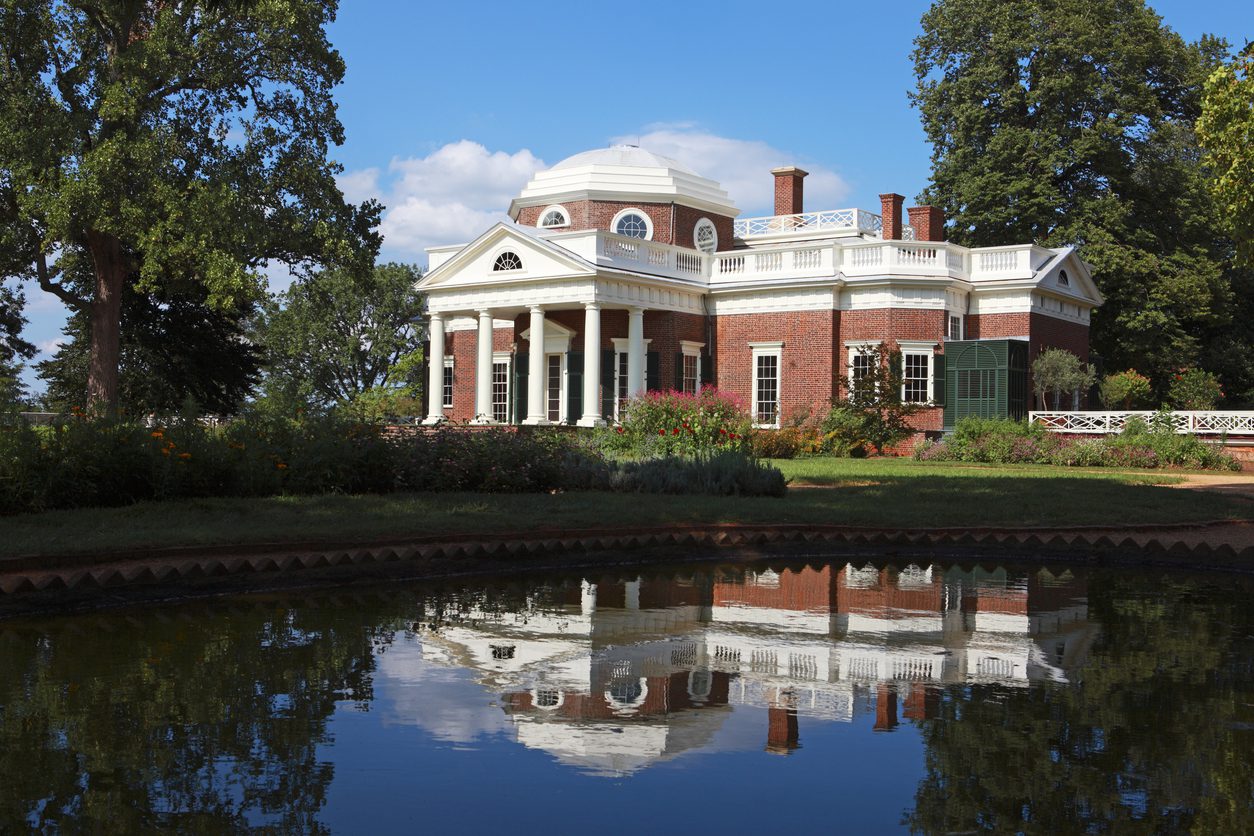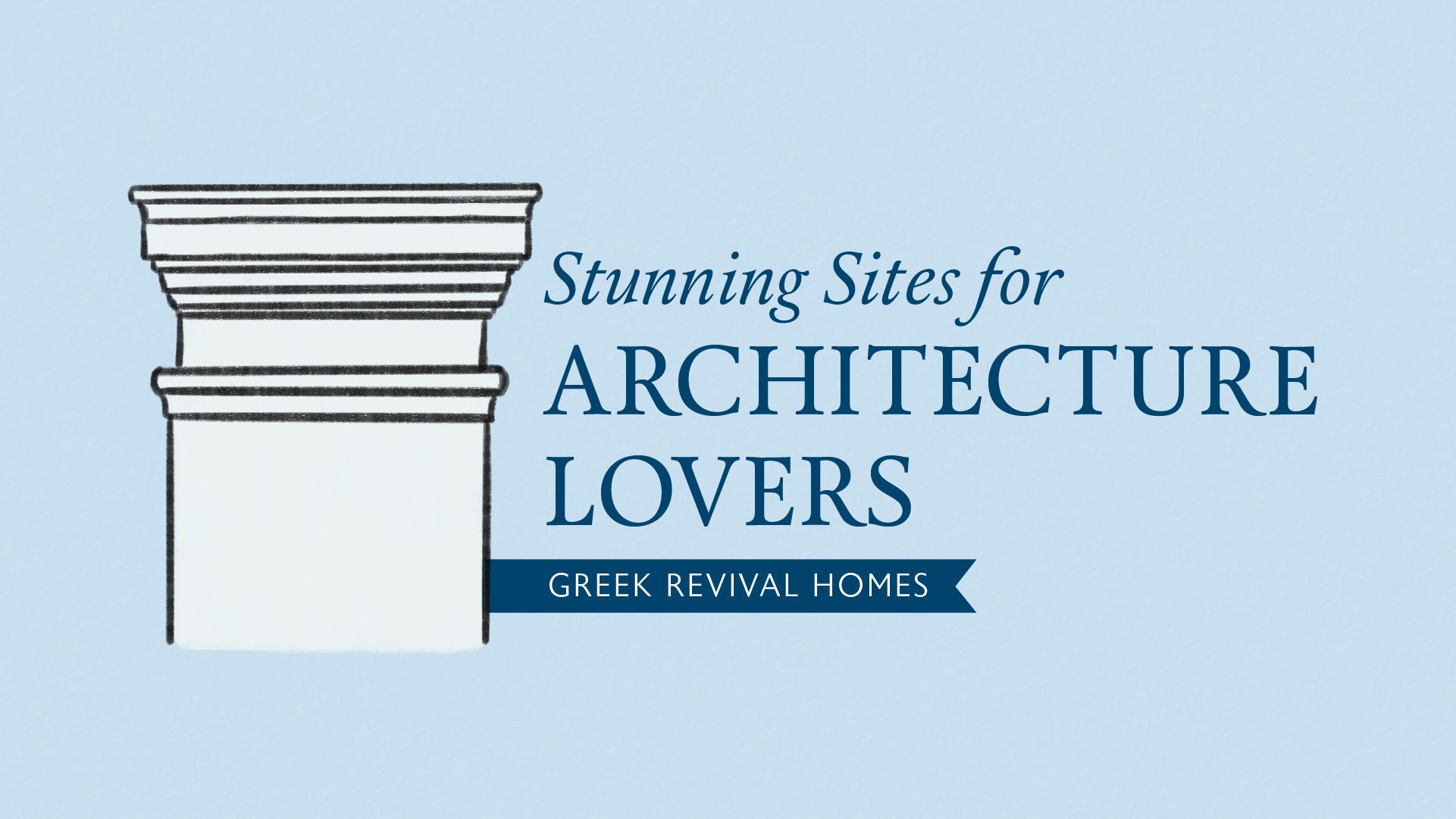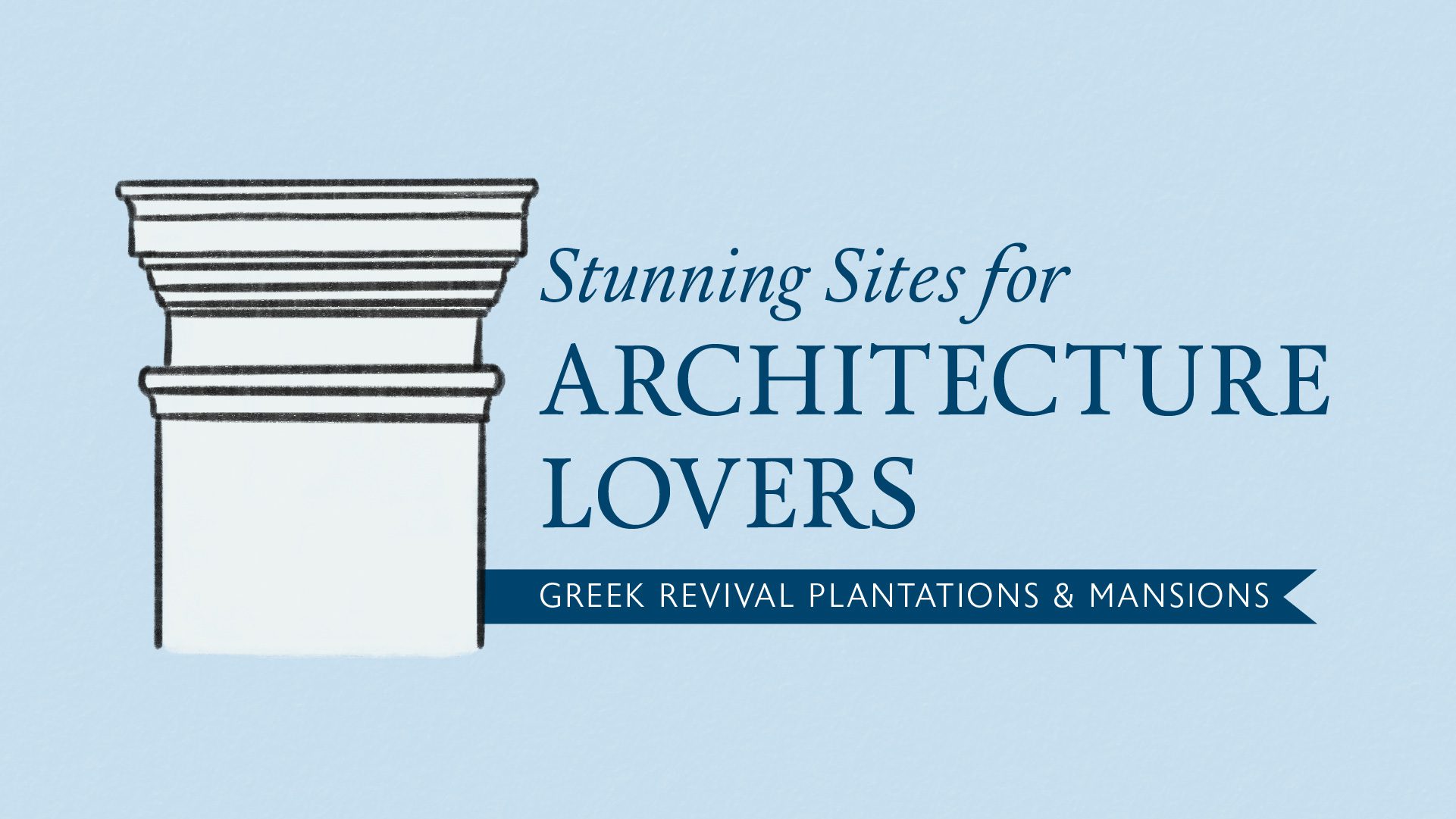
Hear the words “Greek Architecture,” and you probably envision an ancient building like the Parthenon, a temple built to the goddess Athena at the height of the Greek empire. With its stately marble columns that have stood the test of time for the past two and a half millennia, it’s the iconic example of Greek architecture.
You’ve probably seen hundreds, if not thousands, of buildings that emulate the style of the famous Grecian temple with your own eyes – even if you haven’t traveled to Greece! That’s because in the first half of the 19th century, right here in the United States, everyone wanted to design, build, and live in their own piece of Greek culture, sparking an architectural movement known as Greek Revival. With the help of founding fathers and regular homeowners alike, Greek Revival architecture became inextricably tied to pre-Civil War American architecture.
This spring, grab your camera, put on a playlist, and set a course toward some stunning sites for architecture lovers. We’ve compiled a list of destinations that chart through historic homes and mansions that help tell the history of Greek revival architecture in America.
A Brief History of Greek Revival Architecture
Greek Revival Architecture in America started with the founding father and writer of the Declaration of Independence, Thomas Jefferson. In fact, one of the earliest examples of neoclassical architecture in America is his famous residence, Monticello, located just outside of Charlottesville, Virginia.
Now considered the last great Palladian architect, Jefferson believed in architecture as a symbol, that a nation’s architecture could not only reflect its culture and values but also draw its citizens to higher, purer, and more worthy aspirations.
Rather than emulate the architecture of the British, for whom he had developed a great distaste (after all, he was the man who wrote, “The history of the present King of Great Britain is a history of repeated injuries and usurpations.”) Jefferson thought that the new American democracy should honor and emulate the original democracy, Ancient Greece.
In fact, it is known that Jefferson disliked Williamsburg, Virginia, for its Georgian architecture, named after the very king he despised and excoriated in the Declaration of Independence.

Additionally, Greek Revival architecture was popular because of its timeless beauty and versatility. The style could be adapted to a wide range of buildings and could be used to create a sense of grandeur and sophistication.
The style didn’t immediately latch on, however. It wasn’t until the end of the War of 1812 that Americans wanted to further distance themselves from their brethren in Great Britain. With prominent buildings like Monticello and the Virginia State Capitol offering splendid examples of the style, many architects turned toward Greek Revival and neoclassical architecture.
Greek Revival became the dominant style in the United States from 1820-1850, and as such, earned the moniker “The National Style.” From banks and churches to mansions and modest homes, most Americans during this period wanted their homes, businesses, and churches to have columns and cornices. In both big and small ways, people wanted the opportunity to take part in this architectural trend that swept over the nation.
What are the Characteristics of Greek Revival Architecture in the United States?
- Facades are usually painted white to imitate white marble
- Heavy cornices, gables with pediments, and friezes
- Low-pitched gable and hip roofs
- Most windows are double hung, with six panes to a sash, which reflected window-making technology of the early to mid-19th century
- Columns and pilasters are the defining feature, round or sometimes square or octagonal, made out of wood
- The most common capital is the simple Doric style, with the other styles much less common.
Now that we’ve learned a little more history about the Greek Revival architecture movement in America, let’s begin our trek!
Stunning Sites for Architecture Lovers – Greek Revival Homes
We’re starting our odyssey through Greek Revival Architecture with a focus on Greek Revival Homes spread across the United States east of the Mississippi. First up is Kilbourntown House in Shorewood, Wisconsin, a northern suburb of Milwaukee, that sits – you guessed it – along the shore of Lake Michigan. Here you’ll see a quaint but perfect example of Greek Revival Architecture in Benjamin Church’s small home.
Next up, we’re trekking southward to the Windy City for a look at the Clarke-Ford House Museum. Enjoy the perfect symmetry and strong columns that feature on this beautiful home built by early Chicagoans Henry B. and Caroline Palmer Clark, and later preserved by Bishop Louis Henry and Margaret Ford. Over the years, the house survived two moves, a fire, and explosive urban growth to stand as a monument to Chicago’s earliest years.
Point your compass southeast because we’re heading to the heart of the Appalachian Mountains to Charleston, West Virginia, to see the Craik-Patton House. Built by the grandson of George Washington’s personal physician, the home perfectly represents America’s use of Greek Revival architecture to define a uniquely American movement.
And finally, we’re heading to the Deep South to glimpse the beautiful simplicity of The Oaks House Museum, located in Jackson, MS. Spared by General Sherman’s march south during the Civil War, the home is now one of the oldest structures in Jackson. This simple home isn’t white and is smaller than the other homes, but it’s a great example of how Americans in different regions adapted the tenets of Greek Revival architecture to fit their varied needs and tastes. It’s time to set out on your American adventure of Greek Revival homes!
Jump in to the itinerary: Stunning Sites for Architecture Lovers – Greek Revival Homes
Stunning Sites for Architecture Lovers – Greek Revival Mansions & Plantations
On our tour of Greek Revival Mansions and Plantations, we’re taking a tour through the Deep South to see some elegant examples of how Southerners adopted – and adapted – Greek Revival architecture. We begin the tour on the Florida panhandle. The Dorr House, located in the beautiful historic district of Pensacola, is the only brightly painted home on either of our itineraries. The canary yellow home trimmed in bright white was built for Clara Dorr and her children following the death of her husband.
From there, we’re heading west to the Bayou State to St. Francisville where you’ll get to explore Oakley Plantation. Still home to a rich assortment of flora and fauna, the house and surrounding property were where John James Audubon began his 32 iconic bird paintings that would later be published as Birds of America.
Our next stop heads to the oldest of all the structures on either itinerary, the Kent Plantation House in Alexandria, Louisiana. Originally constructed in 1796, the main house features French Colonial architecture. However, when the owners decided to build an addition to the house in the next century, they decided to adopt a Greek Revival style, which is on show with the additions on either side of the main house.
Finally, our Plantations and Mansions itinerary ends in the Lone Star State with the Neill-Cochran House Museum. Perhaps one of the grandest examples of Greek Revival architecture on either of our itineraries, the Neill-Cochran House shows off beautiful columns on the outside and is full of Texas history on the inside. After your odyssey through Greek Revival Plantations and Mansions, it’ll be time to conclude your tour with a trip to some of the finest Tex-Mex in the country.
Stay Tuned for More Itineraries
If you’ve had your fill of Greek Revival architecture, good news; there are more itineraries to explore! More interested in creating your own adventure? Check out our Create an Adventure tool to plan your own.

